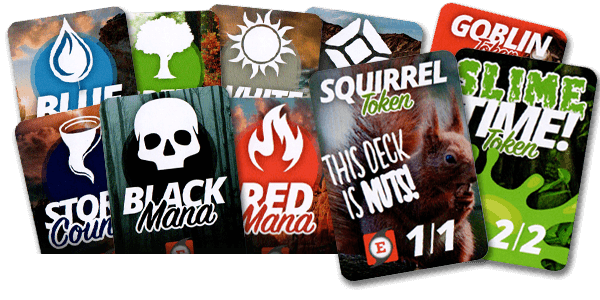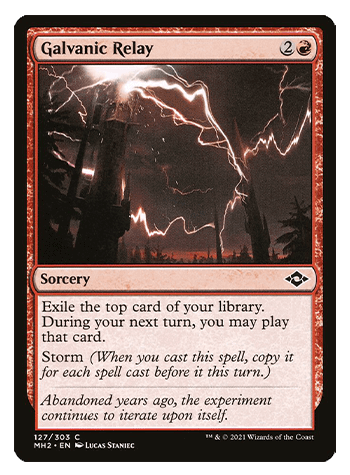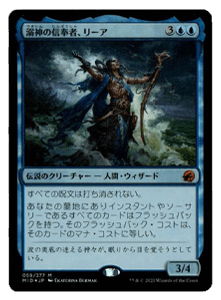Special thanks to Jonathan Anghelescu for his contributions to today’s article.
Today like Quentin Coldwater, we plunge into the fountain. Show & Tell is one of the most enduring, iconic, and powerful combo decks of the legacy meta. Where storm builds a critical mass of cards, and fights through with a suite of discard spells, Show & Tell fights on a different axis. It’s an A + B combo which protects itself with counter magic backup. The presence of Force of Will and Flusterstorm make the matchup inherently different than most combo battles – where knowing your role becomes a key to victory. We sit down with Show & Tell master, Legacy aficionado, and Team GP Santa Clara 2018 Finalist Jonathan Anghelescu – and pick his brain on the S&T versus TES matchup.
Since TES is considerably faster than ANT, I find myself playing the control role more often. Assuming that role becomes much easier post-board, thanks to Leyline of Sanctity. Most of the time I can’t choose which role I want to play, especially pre-board, so it often turns into a race.
The fundamental turns are the early turns, especially turn 1. TES needs early discard, to stop my combo and/or push through their own. If they cantrip on turn 1 and haven’t found a discard spell until turn 3, they are usually in trouble. Leyline of Sanctity obviously changes this dynamic.
Due to discard, hands with a single combo piece and multiple cantrips are usually better than the full combo and no cantrips / counters. I’m still going to keep a hand with turn 2 Show and Tell + Griselbrand, especially on the play, but I’d much rather have safe a hand with cantrips and soft-counters (Spell Pierce + Flusterstorm).
This also depends on whether my opponent also knows what I’m playing, since they are very likely to name Show and Tell with a blind turn 1/2 Cabal Therapy (or Force of Will if they are about to combo off the following turn). If they know that I’m on Sneak & Show, hands with Show and Tell + creature and nothing else going on become even more risky to keep.
The Brainstorm into Cabal Therapy sub-game is certainly interesting, especially with Emrakul, the Aeons Torn shuffle involved. The least experienced Storm players will rarely think about the Emrakul, the Aeons Torn interaction, the more experienced will think they can just “get me” by naming Emrakul, the Aeons Torn, and the most experienced will know that I know that they know, which leads to interesting decisions on both sides.
If I could decide what to put into play, I would obviously always want to have Omniscience + Griselbrand (unless I’m below 8 life). Besides Show and Tell into Sneak Attack / Omniscience without a follow-up, Show and Tell Emrakul, the Aeons Torn is clearly the weakest option. With Show and Tell + Griselbrand I usually feel very safe, although I have missed on draw 14s before.
Sneak & Show is less clunky and therefore more resilient against discard, while OmniSneak / OmniShow has a higher chance of actually winning the game on the combo-turn. I’d still much rather be on traditional Sneak & Show against TES.
Leyline of Sanctity changes the post-board matchup quite drastically. It forces me to mulligan more aggressively, especially on the draw where I feel very naked without Leyline of Sanctity, which also leads to more non-games due to heavy mulliganing. Still, I won’t mulligan for Leyline of Sanctity against TES as aggressively as against ANT. While many ANT players don’t board in any outs for Leyline of Sanctity, TES always has outs to it thanks to Burning Wish and Empty the Warrens.
Unlike ANT, which has high-impact sideboard cards like Flusterstorm, TES has to spend most of its sideboard space on wish targets.
Even though I board in 2 Pyroclasm against TES, Xantid Swarm is a card that I fear since it gets around Leyline of Sanctity.
Telemin Performance is a card I expect but don’t fear, thanks to Leyline of Sanctity and 4 soft-counters that usually hard-counter it.
Except the speed difference the matchups play out quite similarly, since their shells are almost the same. My sideboarding plan also differs slightly (I rarely board Grafdigger’s Cage against TES, Pyroclasm rarely against ANT). (also see answers above)
For more great content on the Show & Tell versus TES matchup see Alex Poling’s TES Matchup Battles.






